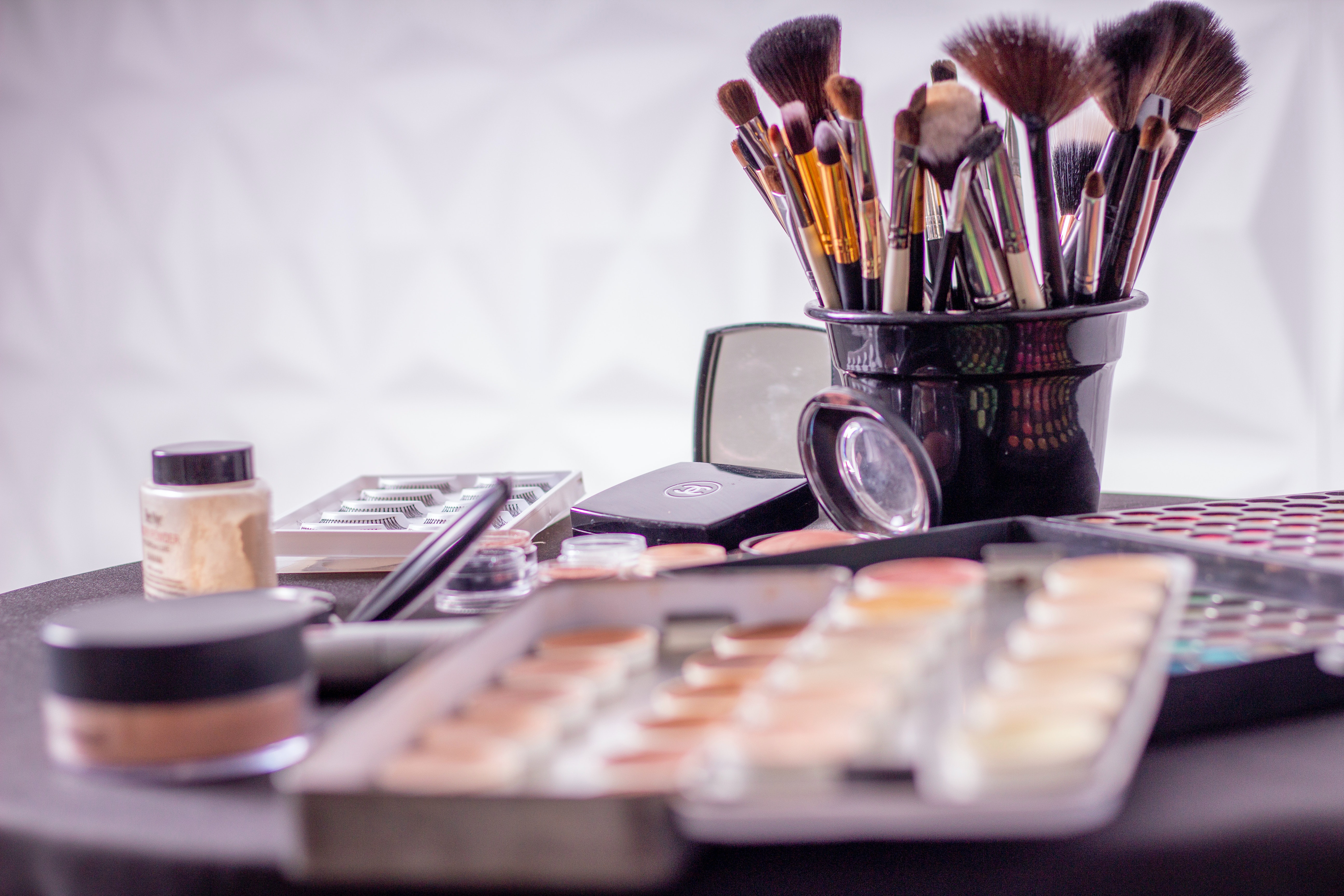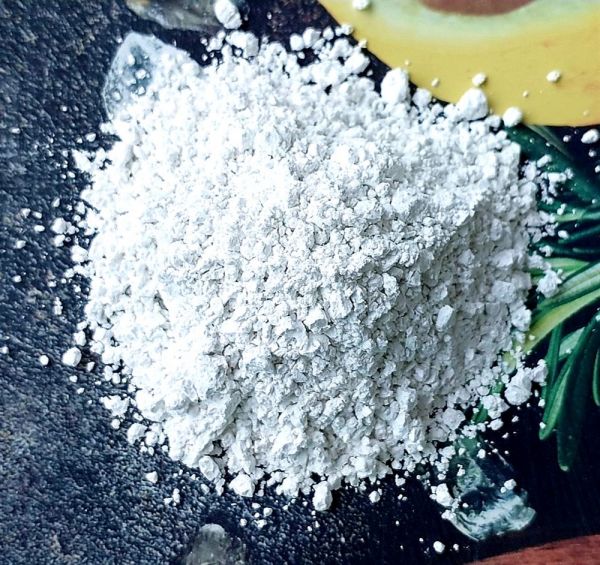Clay white Syrian whole for sensitive skin Aleppo, 100 gr
Leave review
In stock
Shipping methods
- Pickup from New Mail
- New Mail Courier
- Pickup from the store
- Other transport services
Payment methods
- Cash upon receipt
- Bank transfer
- Privat 24
- WebMoney
East Magic Clay white Syrian whole for sensitive skin Aleppo, 100 gr The effect of kaolin on the skin of the face is truly beneficial. Its main advantage over other types of clays is that it is suitable for even the most sensitive skin, and with oily skin it perfectly absorbs excess sebum, which leads to the harmonization of fat balance. Kaolin is the most delicate abrasive, which allows it to be used as a soft scrub. This property of white clay is very valuable for skin with inflammatory acne, for which coarse abrasives are unacceptable, as they can aggravate the course of this skin lesion. White clay (Kaolin) looks like a homogeneous white powder that has a yellow or grayish tint. It is oily to the touch. This clay is best suited for oily and combination skin. It dries, cleanses and tightens the skin well. White clay is able to absorb excess fat, it significantly tightens the pores. You need to know that this type of cosmetic clay also has a slight whitening effect. In addition, with its help, a woman can even out the oval of the face. White clay is also an excellent antiseptic. It is used as part of bactericidal and anti-inflammatory face care products. Regular use of white cosmetic clay will make your skin velvety and more elastic. The complexion will improve and freshen up. The darker the color of the clay, the better it will remove fat and more effectively cope with acne. However, the clay should not be used for rosacea. White clay was first discovered in China, in the town of Kaolin, and therefore inherited its name. This clay is made up of tiny particles and is excellent at absorbing toxic substances and heavy metals. In cosmetology, kaolin-based masks are often used, which are used to treat oily facial skin. White clay is a traditional raw material for the manufacture of cosmetics. Purity, whiteness, non-abrasive nature and harmlessness to human tissues make it a valuable ingredient in cosmetology. It is also used in the form of powders, ointments, pastes, as well as for diaper rash and burns. White clay is an indispensable component in the composition of cleansing masks that relieve acne. The effect of kaolin on the skin of the face is truly beneficial. Its main advantage over other types of clays is that it is suitable for even the most sensitive skin, and with oily skin it perfectly absorbs excess sebum, which leads to the harmonization of fat balance. Kaolin is the most delicate abrasive, which allows it to be used as a soft scrub. This property of white clay is very valuable for skin with inflammatory acne, for which coarse abrasives are unacceptable, as they can aggravate the course of this skin lesion. You can find white clay in the products of such well-known manufacturers as Palmolive, Green Mama, Avon, Oriflame, Faberlic and many others. In expensive toothpastes, kaolin is now replacing chalk. Previously, surfactants (similar to those used in laundry detergents) were added to chalk to achieve the desired consistency, which greatly destroyed the microflora of the oral cavity. Kaolin does not need such additives. It removes tartar, strengthens enamel, reduces the risk of caries, whitens teeth even for heavy smokers and coffee drinkers. And for some reason, annoying advertisements for sugar-free chewing gums are in no hurry to divulge the main secret of “dazzling whiteness”. But it lies in the white clay, which is part of the pads and plates. Clay is widely used in cosmetology. It is usually found in face masks. The main property of cosmetic clay is cleansing and drying of the skin. Clay is able to absorb excess sebum and sweat gland secretions. In addition, it perfectly cleanses the skin of the face, eliminates peeling, irritation and redness. Clay face masks can be used for both oily and dry skin. In addition, clay can enhance the bactericidal effect of certain substances. It is often added to anti-inflammatory ointments and masks. The positive effect of clay on the body lies in the fact that its static wave (8.5 m) coincides with the frequency of oscillations of healthy cells of the body, therefore, by applying clay to a sore spot, we force diseased cells to adapt to the rhythm of healthy ones, thereby healing them. Many healers of ancient times, psychics and magicians have successfully used clay, claiming that it normalizes the human aura. Many people think that clay is only a cosmetic product, but this is far from the case. It is also used as a medicine, while it has a large number of useful properties. Clay has a cleansing and enveloping agent, it absorbs toxins, excess acids, after which it removes them from the body. With the help of clay, you can normalize the metabolism in the body. In addition, clay is used to treat residual effects after polio, diseases of the female genital area, as well as the treatment of diseases of the joints, muscles, spine, peripheral nerve endings, traumatic injuries, gallbladder diseases and many other ailments. Do not forget that the clay contains a large amount of trace elements and mineral salts, thanks to which the clay perfectly strengthens the immune system. It has a beneficial effect on malignant and benign tumors, as it contains radium, which, entering the human body in a small amount, has only a positive effect on it. It has clay and antibacterial action. Clay properties * the composition contains a whole complex of natural minerals, especially rich in iron and magnesium * active ingredients of clay are ideally absorbed into the skin * has a tonic effect on the skin * clay increases resistance to diseases and helps to activate the body's immune responses * deep cleans pores and narrows them * strengthens oval of the face and activates the production of collagen in the skin * greatly increases skin elasticity, excellent lifting effect * normalizes the production of sebum * toning and vitaminization of hair follicles * accelerates hair growth, eliminates hair loss * reduces oiliness of the scalp * mattifies the skin of the face * gently removes impurities with hair, without disturbing the lipid balance * strengthens the structure of the hair shaft, seals the hair scales, this clay gives shine and silkiness to the hair and eliminates split ends * relieves the inflammatory process in eczema, dermatitis, seborrhea and psoriasis * has a pulling and antiseptic effect for problem skin How to use: - To combat dandruff, apply clay diluted with water or natural hydrolat on the scalp. Keep the mask for 1-3 hours, then wash off with a natural shampoo. Apply 1-2 times a week. - natural "camping" cleanser for washing hair, face, body. Dilute some dry clay with water into a pulp and use as a liquid soap and hair shampoo. To cleanse, keep on the skin and hair for up to 30 minutes, then rinse with water. - wrapping: mix with olive oil to the consistency of sour cream, apply on previously cleansed skin for 15-20 minutes, then rinse with warm running water. - scrub: when using liquid or solid olive soap in the shower, apply a small amount of clay to soaped areas of the skin, rub with vigorous movements and rinse with warm running water. Works like a soft scrub. - enrichment of any cleansing and nourishing products for the face, hair, body: shampoos, balms, masks, scrubs, liquid soaps, etc. - spot application for inflammations: mix the clay with tea tree oil and water (green tea or herbal decoction, or hydrolat), spot test on inflammations and glue with a plaster for the night. Rules for applying masks with black clay In order for masks based on black clay to justify trust, they must be properly prepared and correctly applied. Helpful tips to help you. * Do not use black clay masks for rosacea and vascular network on the face. * Black clay powder is pre-diluted in a liquid at room temperature to make a creamy mass. * After preparation, the skin on the wrist is lubricated with the mixture to make sure that there is no allergy to any component of the mask. * Apply the product on the face along the massage lines, without affecting the area around the eyes. * Do not overexpose the mask so that it does not leave a feeling of tightness on the face. Fifteen minutes will be enough. * Rinse off with plain warm water. * After that, apply the usual cream to the skin. * You can carry out such procedures 1-2 times a week, preferably after a bath, when the skin is steamed and cleaned with some kind of scrub. * After 10-12 procedures, you need to take a break of 2-3 weeks. It is excellent to dissolve the clay in salty sea water. Salt itself has bactericidal properties, dries, kills bacteria, and most importantly, salt is a way to dissolve the top layer of the skin. It easily removes fat, undresses your skin layer by layer. We dissolve the salt in water so that the water is salty (not oversalted!), It tastes salty, then add the clay and stir. Apply masks for 15-20 minutes. If the clay has dried on the skin, and this happens, do not pick it, wet it with water, as soon as it gets wet, remove everything with a sponge. It helps to get rid of inflammation and comedones, yes, and enlarged pores smooth out over time. What can be added to the mask? Aloe juice - gives healing and rejuvenation. Suitable for sensitive skin. Nourishes and moisturizes. Honey - nourishes and moisturizes, increases regeneration, softens the skin very well. Jojoba oil - heals, regulates skin moisture. Wheat germ oil - suitable for mature or dry skin. Lemon juice - light peeling, brightens black spots. Ingredients: White clay kaolin, washed, dried and ground into powder. Mined from a quarry at least 20 meters deep. Raw material: Aleppo region, Syria Storage: Unlimited shelf life. Weight: 100 gr.
No reviews yet

